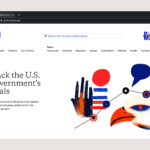For instance, a “Focus” playlist might include “real songs” (made by a human) and AI-generated piano tracks with no way to differentiate them.
While they may sound harmless or even pleasant, they raise significant questions about transparency and artistic integrity.
Why is Spotify leaning into AI music?
Daniel Ek, CEO of Spotify recently said to the BBC that he had
Spotify’s embrace of AI-generated music is less likely about improving the listening experience than it is about cutting costs and boosting profit.
Here’s why it’s such an attractive strategy for the platform:
- Lower licensing fees: Spotify pays royalties for every stream of human-made music, which adds up quickly. Spotify, Liz Pelly discovered, “not only has partnerships with a web of production companies, which, as one former employee put it, provide Spotify with “music we benefited from financially,” but also a team of employees working to seed these tracks on playlists across the platform. In doing so, they are effectively working to grow the percentage of total streams of music that is cheaper for the platform.”
2. Algorithmic synergy: AI music fits perfectly into Spotify’s algorithmic playlists. It’s tailored to match the moods and themes these playlists aim to evoke, ensuring users stay engaged.
3. Endless content: With AI, Spotify can generate infinite tracks to fill playlists, ensuring there’s never a shortage of content, no matter how niche the theme.
While it’s easy to see why this is a win for Spotify’s bottom line, it’s harder to see how it benefits users — or the music industry as a whole.
The UX problem: no transparency, no trust
So to begin, Spotify uses artificially intelligent music-generation. Not particularly a big deal, until one considers the whole thing is set up to be profoundly opaque: it doesn’t flag when a track is AI-generated, nor does it give one the option to filter them out.
This lack of transparency has several consequences:
1. Trust: Users don’t know and can’t decide not to listen to AI music which is a problem if you value authentic, human-made art and freedom of will.
2. Undermining artists: By prioritising AI songs, Spotify impacts the exposure of human artists and their revenue. Over time, AI music composers could take over human artists.
3. Passive consumption: As The New Yorker’s Kyle Chayka pointed out, Spotify design and algorithm encourages passive consumption of “vanilla” content, instead of exploring new music. Over time, users become more dependent on the playlists instead of forming their own musical tastes.
Music has always been more than just relaxing background sound — it’s an art, a cultural expression, and a deeply personal experience.
Fixing Spotify: what needs to change
If Spotify wants to regain the trust of its users, it needs to rethink its approach to AI-generated music.
Here’s what the platform could do:
1. Be transparent: Clearly label AI-generated tracks and inform users when they’re listening to machine-made music.
2. Give users a choice: Allow listeners to filter change their preferences in profile to exclude AI-generated music.
3. Support their artists: Ensure that human song writer continue to be at the center of the platform’s mission, rather than being sidelined by prioritiding cheaper AI music.
What’s next for Spotify?
Spotify’s strategy with AI-generated music is a symptom of a larger issue: a shift from customer-centricity to monetization-first.
If the platform goes too far, it risks alienating the very users who made it a global phenomenon.
Meta has a somewhat similar story.
It was once the quintessential enabler of social interaction, built its empire as a platform where billions of users could share their lives through photos, videos, and stories. For creators, platforms like Facebook and Instagram became the essential tools to build an audience, connect to them and eventually monetize.
But with the rise of AI and the continuous pursuit of profitability, similarly to Spotify, Meta has also ventured into the dangerous territory of content creation.
How Meta’s AI-generated personas work
In 2024, Meta introduced AI-generated profiles.
These profiles — like “Liv,” a fictitious Black queer mom — created posts, shared images, and even interacted with users in ways meant to mimic human behavior.
The personas were meticulously crafted to appeal to diverse audiences, and were posting some cute posts about their family time, ice-skating Sundays, charitable events, and so on, all this using AI-generated images.
The underlying technology combined advanced AI language models and image generators, enabling these AI profiles to simulate complex identities and narratives.
US-based users could chat and interact with them, blurring the line between authentic social interactions and artificial connection.
The fallout: a case study in broken trust
The profiles were labeled as “AI-managed by Meta,” but the reception wasn’t great, highlighting a few problems.
Liv’s profile, for example, portrays a marginalized identity that was entirely fabricated by a team largely composed of white male developers.
Some angry users on X labeled the project as digital blackface, highlighting how it trivialized real experiences and diluted the value of genuine representation.
Chatting with these AI profiles only made matters worse.
When questioned by users, Liv’s AI admitted that no Black creators were involved in her design — making me wander what the process to get this approved by senior leadership was. This revelation deepened public mistrust, exposing the lack of diversity and ethical consideration behind the project.
Within 24 hours, Meta removed the AI-generated profiles, issuing a statement that the profiles were part of an “early experiment.”
Why Meta is pushing into content creation
The motivations behind Meta’s foray into AI-generated personas are clear:
1. Revenue retention: Again, by generating its own content, Meta no longer needs to share ad revenue with content creators. This allows the company to maintain full control over monetization.
2. Engagement optimization: AI-generated content can be optimised to increase user interaction, keeping people on the platform longer and boosting ad impressions and, therefore revenue.
3. Infinite content creation: AI can generate infinite content at scale, ensuring a constant stream of new posts without the costs of paying creators.
While these strategies align with Meta’s monetisation objectives, they erode their vision and mission as social media, which is to connect real people.
Meta’s AI personas: when fake profiles spark real problems
Similarly to Spotify, Meta’s experiment revealed deeper issues that go beyond public backlash:
1. Erosion of authenticity: By introducing AI-generated personas made for connection, Meta forgets the importance of trust. The blurred line between real and fake interactions creates a dystopian sense of disconnection.
2. Ethical oversights: Once again, the lack of diversity in tech impacts its ability to ethically create unbiased content and risks further alienating the very communities these profiles tried to represent.
3. Competition with creators: By generating its own content, Meta competes with human creators who rely on the platform for visibility and income.
Meta’s pivot toward creating content underscores its desire to dominate every aspect of its ecosystem — from hosting content to generating and monetizing it.
The shift from enabling to competing with creators is a risky gamble for platforms like Meta and Spotify.
On one hand, creating content in-house offers some monetisation opportunities and a way to fill gaps in their ecosystems. On the other hand, it undermines the trust and loyalty of creators and users, the lifeblood of these platforms.
Key impacts
- For creators: As platforms generate their own content, creators face increased competition for visibility and revenue. This will drive smaller creators away or force them to find other platforms where they can better create, grow, and retain their audience.
- For users: The lack of transparency on AI-generated content erodes trust for users who come to find authentic connections and content.
- For platforms: While this strategy may boost short-term profits, it risks hurting their network effects by driving users and content creators to other platforms.
Meta and Spotify’s pivot from empowering creators to competing with them reveals a troubling truth about tech today: profitability beats everything.
By turning to AI-generated content, these platforms are chasing short-term gains at the cost of their users and creators.
For creators, it’s a wake-up call to diversify and reclaim control.
For users, it’s a stark reminder to ask for transparency and authenticity in an increasingly synthetic world.
The future belongs to platforms that can innovate without sacrificing their communities, and they will need to strike a balance between making money and giving creators control over their audiences.
Interesting reads to go further:
Enjoyed this? 🌟 support my work by Subscribe to my newsletter for more deep dives! 🧜🏻♀️✨




